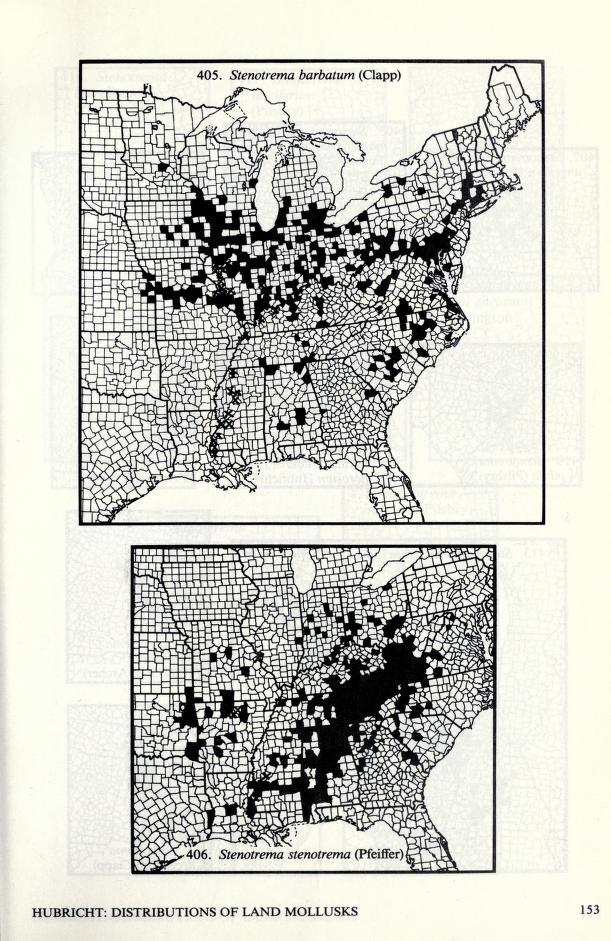Habitat
S.
barbatum is found in the east part of the United States
between the Rocky Mountains and the Atlantic Oceans (Fretter
& Peake, 1975). Fossil records have shown
that
 they
are common in the central plains (Fretter
& Peake, 1975). They prefer a humid climate
in woodlands under dead wood and leaves (Pilsbry,
1948) or in old fields or wetlands (Carnegie,
2005). Though they prefer undisturbed areas,
these land snails can be found in active gardens and fields,
river banks, suburbs, and even cities (Carnegie,
2005). They are also found under stones like
limestone and shale (Pilsbry, 1948).
They come out from hiding at night or in the rain (Pilsbry,
1948). Young snails are known to wander much more freely
than adults and are commonly found on plants on top of which the
adults are taking cover (Pilsbry, 1948).
they
are common in the central plains (Fretter
& Peake, 1975). They prefer a humid climate
in woodlands under dead wood and leaves (Pilsbry,
1948) or in old fields or wetlands (Carnegie,
2005). Though they prefer undisturbed areas,
these land snails can be found in active gardens and fields,
river banks, suburbs, and even cities (Carnegie,
2005). They are also found under stones like
limestone and shale (Pilsbry, 1948).
They come out from hiding at night or in the rain (Pilsbry,
1948). Young snails are known to wander much more freely
than adults and are commonly found on plants on top of which the
adults are taking cover (Pilsbry, 1948).
Elevation and pH levels also affect where the
snail will call its home (Dourson, 2010).
They have a greater affinity for steeper slopes; however, too they
do not live at extremely high elevations because the pH, calcium,
potassium, and magnesium levels are all too low (Dourson,
2010). Moreover, if the soil is too acidic, numbers decline and
their shells become thinner (Dourson, 2010).
They do not venture far over their lifetime and
remain in calcium-rich environments (Carnegie,
2005). Common organisms found living in the same
niche include crickets, beetle larvae, pseudoscorpions, spiders,
springtails, and other snails. (Carnegie,
2005).
Click here to learn about the many adaptations of Stenotrema barbatum.
